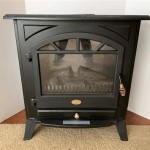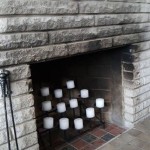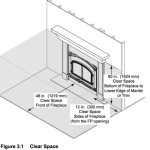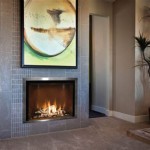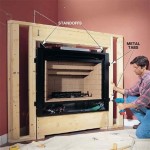How to Install Airstone on a Brick Fireplace
Airstone is a manufactured stone veneer designed to mimic the look and feel of natural stone. Applying Airstone to a brick fireplace can transform the appearance of the hearth, providing a more modern or rustic aesthetic. This process, while achievable for a determined do-it-yourselfer, requires careful planning, precise execution, and adherence to safety precautions. This article provides a comprehensive guide to installing Airstone on a brick fireplace, outlining the necessary steps and offering helpful tips to ensure a successful outcome.
Before commencing the project, it is crucial to understand the implications of altering the fireplace's facade. Verify local building codes and regulations regarding fireplace modifications. Some jurisdictions may require permits for such alterations. Ensure the existing brick structure is sound and capable of supporting the added weight of the Airstone. Address any structural weaknesses before beginning the installation.
Gathering the necessary tools and materials is the first practical step. This preparation ensures a smooth and efficient workflow, minimizing interruptions during the application process. The following list outlines the essential items required for a successful Airstone installation:
- Airstone Veneer: Calculate the square footage of the area to be covered and purchase sufficient Airstone, accounting for cuts and potential waste.
- Airstone Adhesive: Use an adhesive specifically designed for Airstone or manufactured stone veneer. Ensure the adhesive is suitable for application on brick.
- Notched Trowel: Choose a trowel with the appropriate notch size recommended by the Airstone adhesive manufacturer.
- Level: A 4-foot level is preferred for ensuring horizontal and vertical alignment.
- Measuring Tape: For accurate measurements and precise cuts.
- Pencil or Marker: For marking cut lines on the Airstone.
- Wet Saw with Diamond Blade: A wet saw is essential for making clean and accurate cuts in the Airstone.
- Angle Grinder with Diamond Blade (Optional): For fine-tuning cuts and smoothing edges.
- Safety Glasses: To protect eyes from dust and debris during cutting and grinding.
- Dust Mask or Respirator: To prevent inhalation of dust particles.
- Gloves: To protect hands from adhesive and sharp edges.
- Grout Sponge: For cleaning excess adhesive from the Airstone surface.
- Bucket: For cleaning the sponge.
- Wire Brush: For cleaning the brick surface prior to adhesive application.
- Chisel and Hammer (Optional): For removing any loose or uneven brick.
- Caulk Gun and Fire-Rated Caulk: For sealing gaps around the fireplace opening.
Surface Preparation: Ensuring Proper Adhesion
Proper surface preparation is paramount for achieving a strong and durable bond between the Airstone and the brick fireplace. Neglecting this step can lead to adhesion failures and ultimately compromise the aesthetic and structural integrity of the installation. The following steps outline the necessary procedures for preparing the brick surface:
The brick surface should be thoroughly cleaned. Remove any loose debris, dirt, soot, or paint using a wire brush. A pressure washer may be employed for more stubborn residues, but ensure the brick is completely dry before proceeding. Allowing the brick to dry can take 24 to 48 hours.
Inspect the brick for any loose or damaged sections. Use a chisel and hammer to remove any unsound brick. Fill any significant voids or cracks with a masonry patching compound, ensuring it is flush with the surrounding surface. Allow the patching compound to fully cure according to the manufacturer's instructions.
Assess the brick surface for any irregularities. Ideally, the surface should be relatively smooth and even. If significant variations exist, consider applying a thin coat of mortar or a self-leveling compound to create a more uniform substrate. This step is particularly important if the existing brickwork is severely uneven or contains protruding elements.
Consider applying a bonding agent to the brick surface. A bonding agent enhances the adhesion between the brick and the Airstone adhesive. Follow the manufacturer's instructions for application and drying time. Ensure the bonding agent is compatible with both the brick and the chosen Airstone adhesive.
Airstone Installation: Applying the Veneer
The Airstone installation process requires careful attention to detail and precise execution. Planning the layout and adhering to proper adhesive application techniques are crucial for a professional-looking result. The following steps outline the process of applying Airstone to the prepared brick fireplace:
Dry-fitting is an essential step. Before applying any adhesive, lay out the Airstone pieces on the floor in the desired pattern. This allows for visualizing the final appearance and identifying any necessary cuts or adjustments. Consider the overall aesthetic and strive for a balanced distribution of colors and textures. This stage also helps determine the optimal placement of full stones and cut pieces, minimizing waste and maximizing visual appeal.
Begin applying the Airstone adhesive to the back of each stone using the notched trowel. Ensure the adhesive is evenly distributed and covers the entire surface. Follow the adhesive manufacturer's recommendations for the appropriate notch size and application technique. Avoid applying excessive adhesive, as this can ooze out between the stones and create a messy appearance.
Press the Airstone firmly against the prepared brick surface. Apply consistent pressure to ensure a secure bond. Use a level to verify that each stone is aligned horizontally and vertically. If necessary, gently tap the stone with a rubber mallet to fine-tune its position. Maintain consistent joint spacing between the stones. The recommended joint width typically ranges from 1/2 inch to 1 inch, depending on the desired aesthetic. Consider using spacers to maintain uniform joint spacing.
Continue installing the Airstone, working from the bottom up. Stagger the joints between rows to create a more natural and visually appealing appearance. As you progress, periodically check the overall alignment and make any necessary adjustments. Address any unevenness or gaps promptly to prevent them from compounding as the installation progresses.
Cutting Airstone is often required to fit around the fireplace opening or to accommodate specific design elements. Use a wet saw with a diamond blade to make clean and accurate cuts. Wear safety glasses and a dust mask to protect against dust and debris. For intricate cuts or fine-tuning, an angle grinder with a diamond blade may be used. Exercise caution when using power tools and adhere to all safety instructions.
Finishing Touches: Completing the Installation
After the Airstone has been installed, several finishing touches are required to complete the project and ensure a professional-looking result. These steps include cleaning up excess adhesive, sealing gaps, and inspecting the final installation for any imperfections. The following steps outline the necessary procedures for completing the Airstone installation:
Remove any excess adhesive from the surface of the Airstone using a damp grout sponge. Work carefully to avoid damaging the stone or smearing the adhesive. Rinse the sponge frequently in clean water. For stubborn adhesive residues, a mild detergent may be used. Avoid using abrasive cleaners, as these can scratch or discolor the Airstone.
Allow the adhesive to fully cure according to the manufacturer's instructions. This typically takes 24 to 72 hours, depending on the adhesive type and environmental conditions. Avoid disturbing the Airstone during the curing process to ensure a strong and durable bond.
Seal any gaps around the fireplace opening with fire-rated caulk. This prevents drafts and ensures that the fireplace operates safely and efficiently. Apply the caulk evenly and smoothly. Use a caulk gun to apply the caulk and smooth it with a wet finger or a caulk smoothing tool.
Inspect the final installation for any imperfections. Check for loose stones, uneven joints, or visible adhesive residues. Address any issues promptly. If necessary, re-apply adhesive to secure loose stones. Clean any remaining adhesive residues. A thorough inspection ensures a high-quality and aesthetically pleasing finished product.
Proper installation of Airstone on a brick fireplace requires meticulous planning, careful execution, and attention to detail. By following these steps and adhering to safety precautions, a homeowner can successfully transform the appearance of their fireplace and enhance the overall aesthetic of their living space.

Diy Stone Fireplace With Airstone Binkies And Briefcases

Diy Stone Fireplace With Airstone Binkies And Briefcases

Brick Fireplace Makeover Pine And Prospect Home

Airstone Fireplace Makeover

Airstone Fireplace Makeover The Lettered Cottage

Family Room Makeover Part 4 Airstone Fireplace Infarrantly Creative

How To Tile An Outdoor Fireplace With Airstone

Diy Fireplace Makeover Part Three Airstone Installation Remodelaholic

Brick Fireplace Makeover Pine And Prospect Home

Diy Fireplace Makeover Part Three Airstone Installation Remodelaholic
Related Posts

